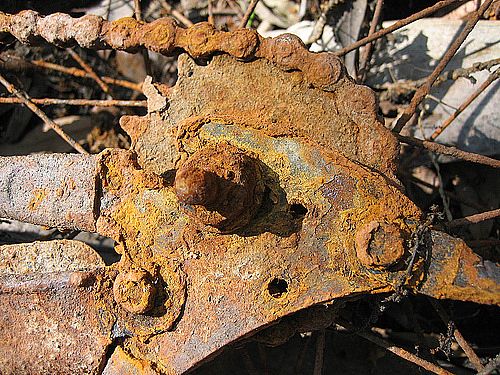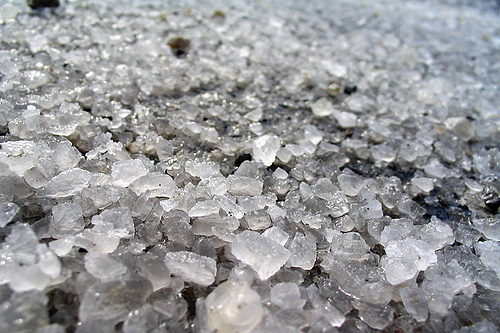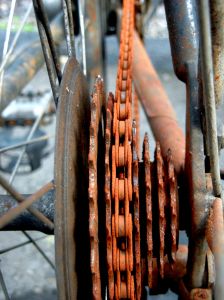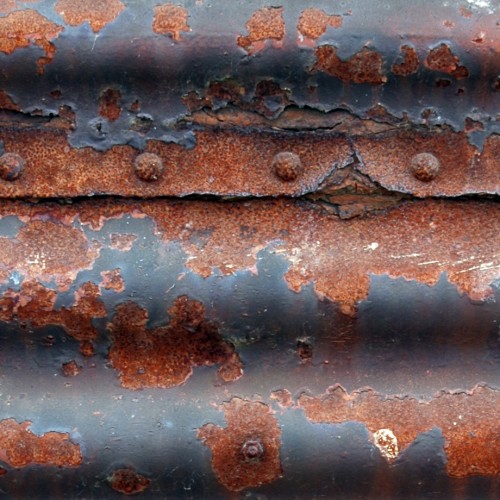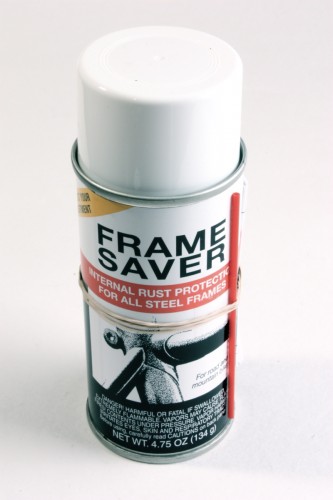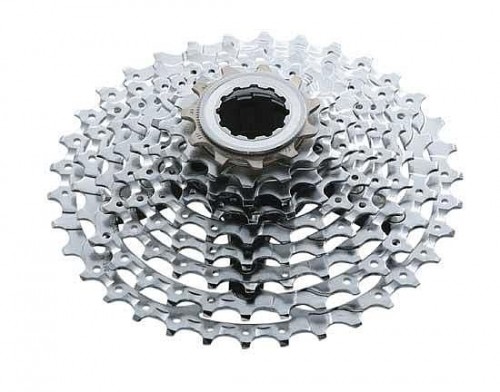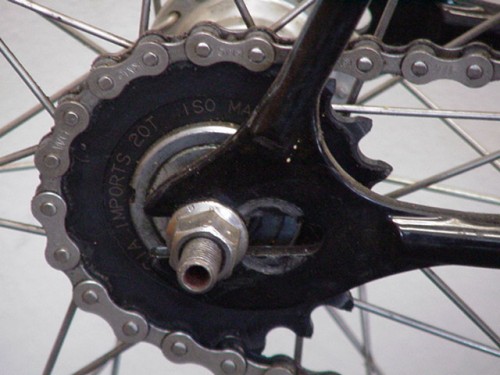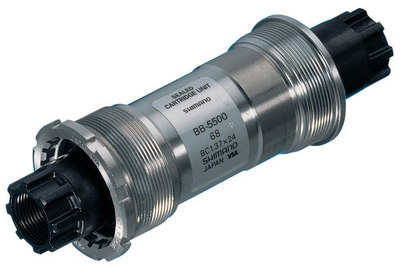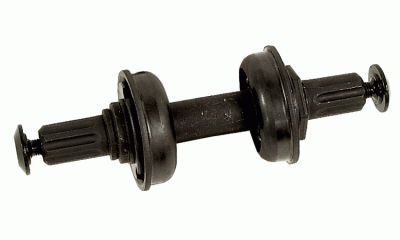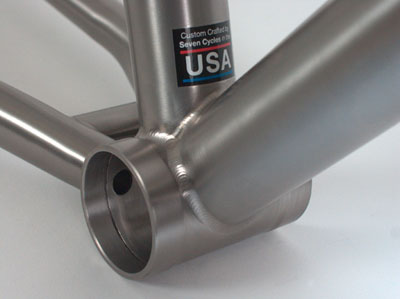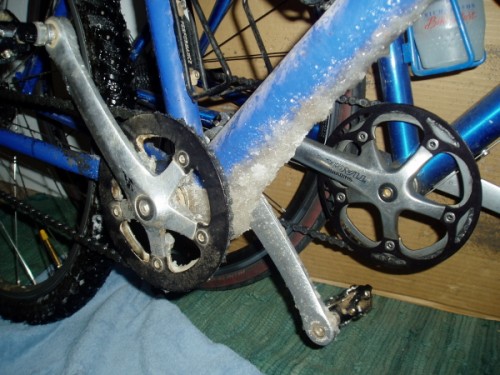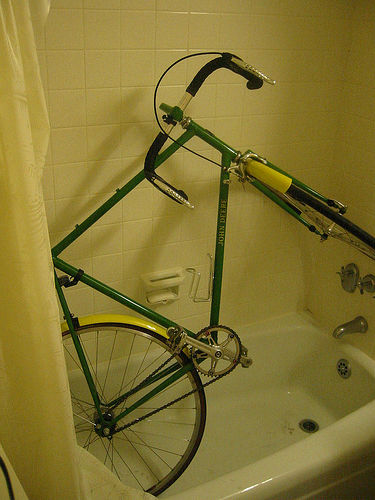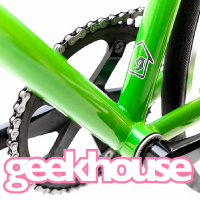The Latest From BostonBiker.org
News, Events, Updates
Cleaning Your Bike In The Winter (Or A Physical Manifestation Of My Shame)
Written by Boston Biker on Feb 09Jay left this comment:
“Any advice for a fool that left his bike in the snow? (Cleaning wise, anyways)”
In an effort to answer Jay’s questions I present my own bicycle as an example…the shame burns.
I have become one of those people with a rusty creaking chain…I hang my head.
So last night I gathered up my pride and a damp towel and started in on the beast. After 10 minutes and the removal of both wheels (more on that in a later post) My bike looked like this.
My Method:
Damp towel + elbow grease + liberal amounts of chain lube = clean bike.
I wipe down the entire frame, wipe down the rims, the hubs, the cranks etc. Then I apply a lot of lube to the chain, and wipe the chain down, apply more lube, wipe, repeat till chain looks like metal again, then lube liberally and wipe once more.
What I Do Not Do:
Spray water on my bike. Spraying water can drive it into places you do not want it, especially in the winter where it will freeze/rust things you care about.
Work outside. Its just too damn cold, the damp rag method seems to work just fine cleaning it inside.
Worry about getting it perfect. If you look you will see plenty of dirty left on the bike, I just try to knock off most of it. Its just going to snow again next week, so I am not getting out the tooth brush.
In a perfect world I would do this wipe down every day, but as well know the world is not perfect, and often when you come home from a hairy snow day commute the last thing you want to do is wipe down your bike. So I try to knock back the horrible at least once or twice a month. Having an aluminum bike helps.
I hope these tips help you reduce your own shame at having a filthy bike in the winter.
Feel free to leave any tips for winter bike cleaning in the comments.
Tags: cleaning, salt, shame, winter
Posted in bostonbiker, education | 3 Comments »
Winter Riding In Boston – Winter Bicycle Maintenance
Written by Boston Biker on Dec 07In this ongoing series we are talking about how to ride your bike all winter here in Boston. Yes it can be done, and yes it can be fun. We have already talked about what to do as it gets colder, in this article we are going to talk about how to keep your bicycle happy in the snow and ice.
As one intrepid visitor to our city described it, the “Boston wash” (that is the mix of snow, salt, oil, grit, and water) can destroy a bicycle in short order. Brake cables rust and snap, cogs melt, chain rings fall apart, frames look like Swiss cheese, chains grind to a halt, gears stop shifting, even rubber wheel can succumb to this potent mix.
When it snows (and it will snow), the city of Boston has the answer. SALT. Many a morning I have hit the streets and wondered how the city can afford to pave the streets in diamonds, only to discover that it is a crusty layer of salt and sand. When this salt is mixed with a slushy snow it can destroy a bicycle faster than an MBTA bus. So how are you going to protect your bicycle from this menace?
Protecting your bicycle from a Boston winter will depend on what kind of bicycle you have. Read the following instructions to figure out what to do. After we deal with bike specific upkeep, we will go over component health, bicycle cleaning, and general upkeep tips.
What is your bicycle made of?
Is your bicycle (or components) made of Steel, Cromoly, or some other steel derivative?
Yes: See Steel Bikes
No: See Aluminum and Other Bikes
How many gears does your bicycle have?
Does your bicycle have more than one gear (internal geared hubs count as a single speed)
Yes: See Multi-Speed
No: See Single Speed
How is your bottom bracket constructed?
Does your bicycle have a sealed bottom bracket?
Yes: See Sealed Bottom Brackets
No: See Loose Bearing Bottom Brackets
——————————————————-
Steel Bikes:
People like to say “steel is real” and for good reason, you can run a steel bicycle into a wall and it is a good chance it will survive with only a dent or two. Steel bikes ride well and have a flex to them that makes them feel alive under you as you ride. However steel has one major drawback, it is highly susceptible to rust.
Rust (Iron Oxide) is what happens when steel (iron) water and air get together. When water gets on the steel parts of your bicycle several things start to happen. First the water (the water acts as an electrolyte, when you add salt to the water this reaction works even better) combines with carbon dioxide in the air to form carbolic acid (the same acid that they use to make the bubbles in soda) This acid dissolves the iron, this reaction will cause the water to break down into hydrogen and oxygen. The free oxygen and the dissolved iron combine to form iron oxide (rust).
If you have a bicycle frame made of steel, cromoly, or any other compound that is mostly iron/steel you could have rust problems. Older chain rings (can be steel), shifter and brake cables (steel), baskets or water bottle holders (often steel), and some older wheel rims (steel) will rust away rapidly in the salty watery mix of a Boston winter.
To protect your steel parts from rust you must keep the key components of rust away from them. Because it is unlikely that you will be able to keep air away from your bicycle you must the water and the salt away from your bike. To protect your frame you will need to keep water off the outside and inside of your bicycle.
To protect the outside you will need a good paint job. The tiniest scratch in the paint is enough to let the evil rust in. I suggest you use a wax (the same kind you use on a car) to wax the outside of your bicycle. You wax your bicycle the same way you wax a car (follow the instructions on the can).
To protect the inside of your bicycle (yes the inside will rust if you get it wet and salty, which will most certainly happen in a Boston winter) use Frame Saver. Frame Saver is a product you spray on the inside of your bike (take the seat and handle bars off and spray it down the tubes) and it will keep rust from forming on the inside of your bicycle frame. We will discuss how to keep the steel components from rusting later.
Aluminum and Other Bicycles:
If you have a bicycle made out of aluminum, carbon fiber, titanium, plastic, or some other non-steel material, you are going to have a better time during the winter. All of these materials are much more resistant to corrosion. Titanium, and Carbon fiber are almost immune to corrosion, Aluminum is also very resistant, but get them wet and salty enough and even the plastic resin coating of carbon fiber bikes will begin to fall apart. To protect your non-steel bicycle from the winter I suggest waxing the frame. You will not need to do anything to the inside of your bicycle.
Multi-Speed Bicycles:
Multi-speed bicycles mean lots of cogs and chain rings. Lots of cogs and chain rings means lots of places for slush, water, grit and salt to weasel its way in and grow a fine rust garden. If you insist on riding your road bike through the winter, you are going to have some trouble. All of those chain rings and cogs mean that you will be doing A LOT of cleaning. I would very much suggest you get a single speed bicycle for winter riding. If you absolutely can not be bothered to clean your bicycle after every snow storm/slush/rain/etc you could also just admit to yourself that at the end of winter you are going to buy a new chain, chain ring set, and cassette (which can be lots of $$).
Single Speed Bicycles:
Single speed bicycles are bicycle with a single chain ring in the front, and a single cog in the back. This includes single speeds, internally geared back hubs, and fixed gears. They are great for winter riding because they offer way less surface area for winter to work it’s evil rust magic. You will still need to clean your bicycle, but it will be much faster, and you will love how easy it is.
Sealed Bottom Brackets VS Loose Bearing Bottom Brackets:
Bottom brackets are the little mechanical wonders that your cranks connect to. It is located hidden away from view at the bottom of your bicycle where your crank arms connect to to the chain ring. If you flip your bicycle over and look at the part at the bottom you will see where your bottom bracket lives, this is called the bottom bracket housing.
You might need to ask a bike shop mechanic to determine this for you, but bottom brackets and hubs come in two basic flavors. Sealed, and loose bearing. Sealed bottom brackets have bearings that are encased in a little shell, this shell is will protect them from most of the ravages of winter. If you have a sealed bottom bracket you will need to make sure that the threads of your bottom bracket are well greased, this will keep water and salt out of the bottom bracket housing.
If you have loose bearing bottom bracket or a steel frame (steel frames will often have holes in the bottom bracket housing to let water drain out) the bottom bracket will be much more susceptible to rust. I would suggest you find out if your bottom bracket can be replaced with a sealed bottom bracket. Also spray the bottom bracket housing with Frame Saver. If you can’t do either I would suggest you use a different bicycle for winter riding. Making sure the bottom bracket threads are well greased will also help.
Cleaning Your Bicycle:
Keeping your components healthy (brake cables, racks, baskets, water bottle holders, seat posts, chains, chain rings, cassettes, cogs, etc), is all about keeping your bike clean. Things wont rust if they are not exposed to water and salt. Cleaning your bike in winter breaks down into two categories.
Day to day: Every day when you get home, grab a rag and wipe your entire bicycle down. Wipe the frame, the wheels, the spokes, the entire bike. Get the brakes, the chain, the chain rings, everything. Try to wipe off any water/salt/grit that has gotten on your bike. This takes about 4 minutes, and will keep your bicycle SO HAPPY in the winter. You may be tempted to let the salt build up, but you will be sorry if you do.
After is snows/slushes/rains/etc: After a ride through the rain, or slush, or snow do the same thing you do for a day to day cleaning, but also lube the chain. To lube the chain you first wipe the chain down with a rag (try to get all the nasty off), then put some chain lube (do not use WD40, WD40 stands for Water Displacement formula 40, it is used to drive water out of hinges and other mechanical parts, in no way is it a lubricant) on the chain and rotate the chain a couple of times to let it work its way in, then wipe down the chain again to get all the extra lube off. If your chain is really dirty lube it heavily then wipe it down, lube, wipe, lube, wipe, etc until the crud is off, then lube it one last time, then wipe off all the extra lube.
Sexy bicycle cleaning:
About two or three times during the winter you will need to give your bike a real good wash. This can be difficult because it is freezing outside, you can’t go outside with a bucket and sponge. It’s time for a sexy bicycle shower. Seriously, bike showers are not only sexy, but your bicycle will love it.
When you take your baby in for it’s first shower, don’t let water spray directly on your bicycle, it will work its way into places you don’t want it. Also be warned, bike crud will stain soap scum black, so be prepared to wash the tub when you are done. If you live with others don’t let them see you, they wont understand.
I use a bucket, and a cup. I let water slowly run over my bike while scrubbing gently with a sponge to get the nasty off. Once the bike is clean, dry it well, and allow it to sit inside for several hours (over a heating vent or near a radiator will help any trapped water evaporate) then re-lube the chain.
General Upkeep Tips:
Keep your bicycle inside. Don’t let the snow and nasty fall on your bike all night every night. It will only make it rust out faster.
Don’t park your bike in a snow bank and expect it to be alive come spring time, it wont be.
Keep your chain lubed to keep it alive all winter. Chains are the first thing to go, as they get the must grit/salt/water in them.
Lube your brake cables and shifter cables. You can actually drop a couple drips of chain lube into the brake and shifter cable housings and this will protect your steel cables from rusting and seizing up all winter.
Keep the brakes (the parts that move, not the brake pads, putting lube on the pads will defeat the point of brakes), and derailleurs lubed as well. Any moving part needs a bit of lube or grease to keep going all winter.
Your brake pads are going to wear out during a winter. Salt, water, and sand seems to be the perfect mix to destroy a set of pads. Brake pads are cheap and easy to switch out yourself, keeping them fresh will make sure you can stop quickly (important when it is slick out).
Use fenders, they will keep water, salt and crap off your bike.
The perfect winter bike:
In my opinion the perfect winter bike is an aluminum framed fixed gear bicycle with full fenders, only a front brake, and a sealed bearing bottom bracket. The reason I say this is because this bike will have the absolute minimum of moving parts on it. Having a fixed gear means you really only need a front brake (less cables and cable housing to worry about, as well as less brake pads to worry about). The single chain ring and cog mean that it will be very easy to clean them, as well as to clean the chain. The full fenders will keep water and salt off the frame, and the aluminum frame will be very resistant to corrosion.
If you don’t have the “perfect” winter bicycle you can do your best. A non-steel frame is better than a steel one, a single speed better than a multi-speed, sealed bottom bracket better than loose bearing.
Another option is to build yourself a very cheap “winter bike.” This is your $40 Craig’s List special, that you ride into the ground each winter and recycle or give away when it gets nice out. You will most likely spend less on a 40 dollar bike than you will on replacing all the nice components on your fancy road bike after a winter or hard riding. I don’t like this option because it is wasteful, but economically speaking it might be your best bet. If you can manage to get a winter bike to survive several winters though a good cleaning regiment you may be able to ecologically justify this approach.
Keeping your bicycle well maintained is an important part of winter riding safety. You don’t want your bicycle to fall apart under you when you most need it (to get you home in the cold). Keeping your bicycle clean and well maintained will also keep your wallet happy. A pinch of prevention is worth many tens of dollars in replaced parts at the end of a long salty winter.
If you have any good winter bicycle upkeep tips share them in the comments, or if you have questions drop them there as well and I will see if I can answer them.
If you ride all winter and want to proclaim your street cred pick up one of our great “This bike survived a Boston winter” stickers at the store.
Tags: cleaning, ice, lube, maintenance, rust, slush, snow, upkeep, winter riding
Posted in education | 22 Comments »
The Word On The Street
 Here is what people are saying
Here is what people are saying
- Where bicycles are prohibited in Massachusetts August 16, 2023The main issue you will confront if you get into a dispute with police over bicycle prohibitions is whether the prohibition is supported by law. Often it is not. Example: the ramp from Commonwealth Avenue to Route 128 northbound and … Continue reading →jsallen
- Where bicycles are prohibited in Massachusetts August 16, 2023The main issue you will confront if you get into a dispute with police over bicycle prohibitions is whether the prohibition is supported by law. Often it is not. Example: the ramp from Commonwealth Avenue to Route 128 northbound and … Continue reading →jsallen
- It’s Finally Happening! 5th Annual Hot Cocoa Ride Feb 12! February 9, 2022... Continue reading →commonwheels
- It’s Finally Happening! 5th Annual Hot Cocoa Ride Feb 12! February 9, 2022... Continue reading →commonwheels
- Hello world! June 9, 2021Welcome to WordPress. This is your first post. Edit or delete it, then start writing! Continue reading →thecommunityspoke
- Run The Jewels Lead Free Pewter Hand Carved And Cast Pin Set January 4, 2021Made these lovely RTJ fist and gun pin set. Hand carved in wax, and then cast in lead free pewter. Because these are made by hand you can do fun things like add an extra small pin so that they sit just so (also means they have “customized” brass back plates to accommodate the extra […]Boston Biker
- My Work In The Wild: Feather Head Badge With Chris King Headset January 3, 2021One of my customers sent me this amazing picture of my feather badge installed on their (awesome!) bike. Check out Manofmultnomah (here and here), apparently Chris King took some interest in it as well. Want one of your own? Buy it here, or here... Continue reading →Boston Biker
- Boston’s Invitation to Improve Biking in Boston: Draw on Some Maps! December 14, 2020Sometimes, the best way to gather ideas and feedback is to let people draw on some maps. Last night, at the Bike Network Open House, pedallovers unveiled a draft for their upcoming plans for a more connected biking network infrastructure … Continue reading →greg
- Boston’s Invitation to Improve Biking in Boston: Draw on Some Maps! December 14, 2020Sometimes, the best way to gather ideas and feedback is to let people draw on some maps. Last night, at the Bike Network Open House, pedallovers unveiled a draft for their upcoming plans for a more connected biking network infrastructure … Continue reading →greg
- Boston’s Invitation to Improve Biking in Boston: Draw on Some Maps! December 14, 2020Sometimes, the best way to gather ideas and feedback is to let people draw on some maps. Last night, at the Bike Network Open House, pedallovers unveiled a draft for their upcoming plans for a more connected biking network infrastructure … Continue reading →greg
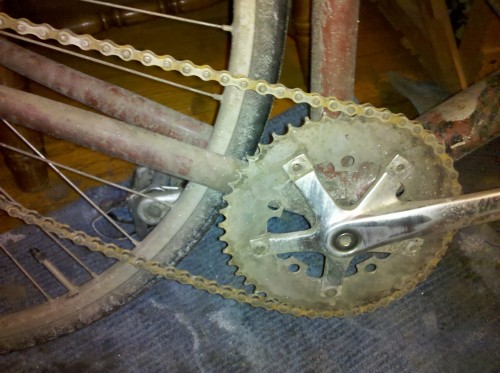
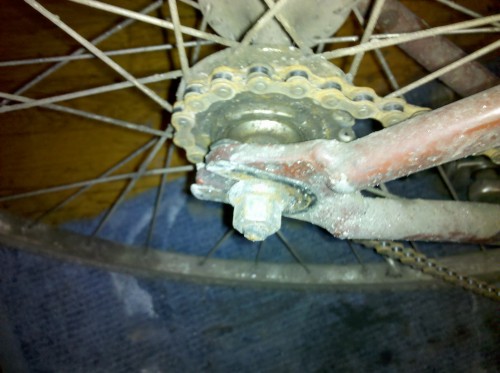
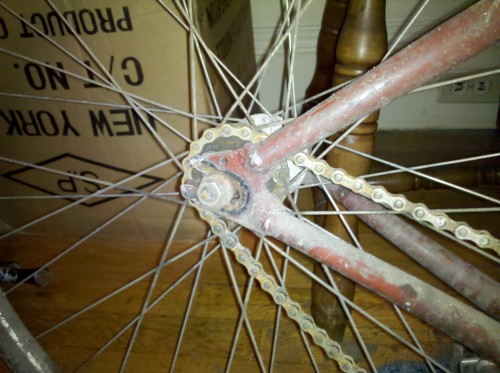
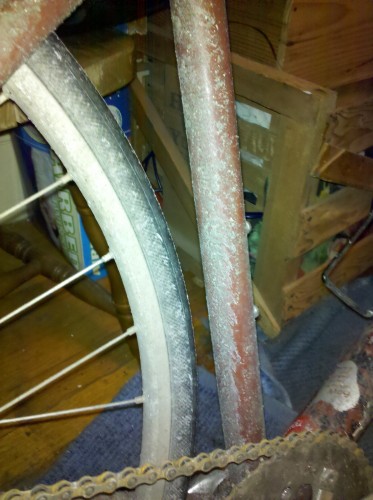
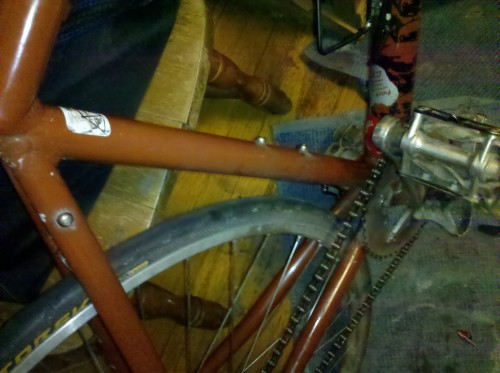
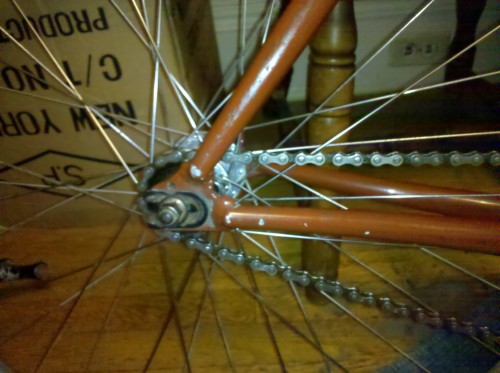
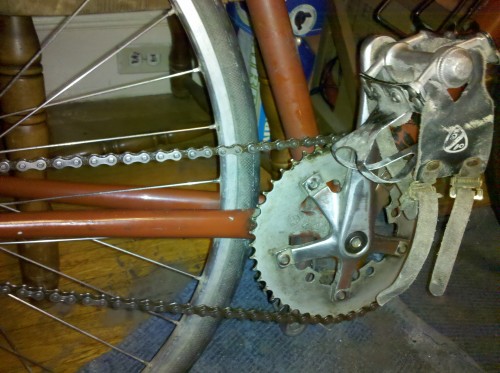
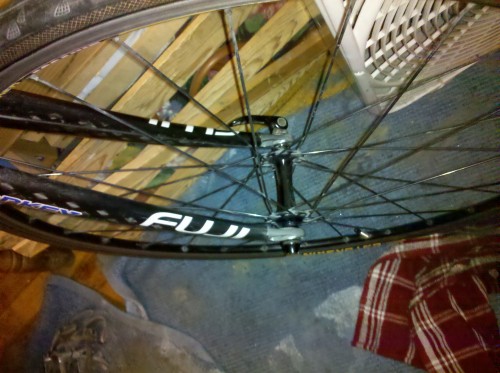
 Add to Reddit.
Add to Reddit. 